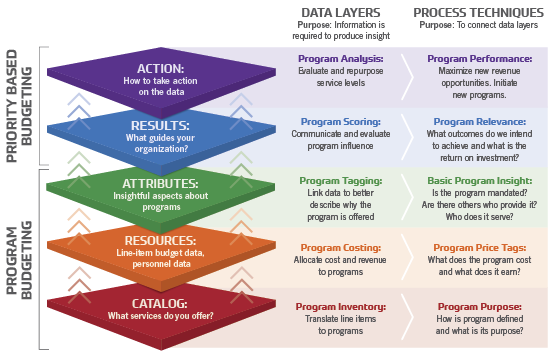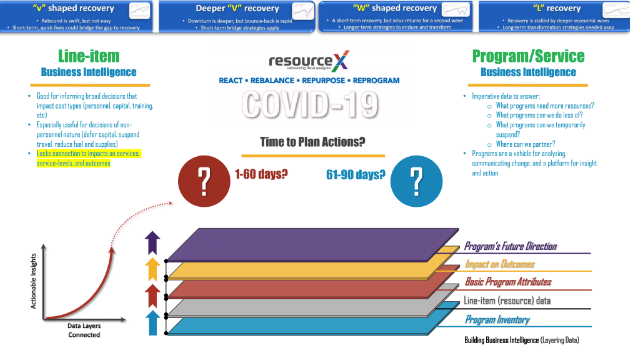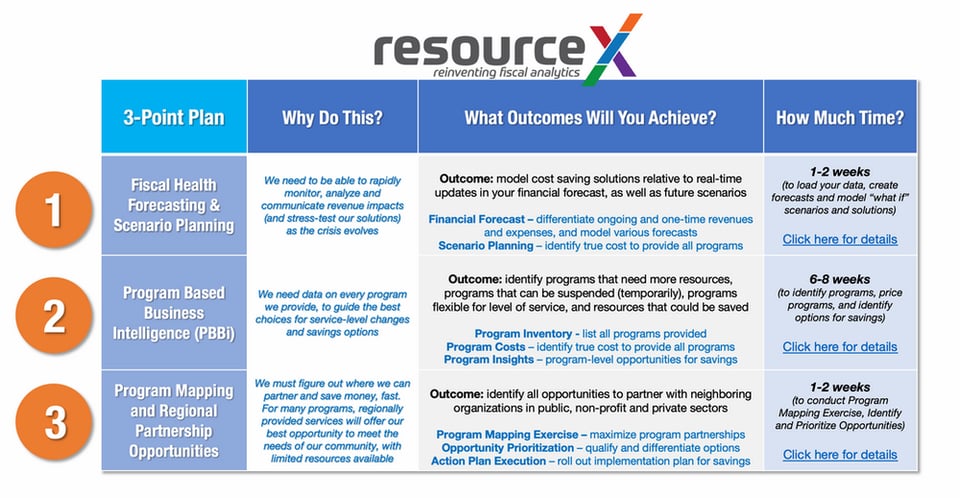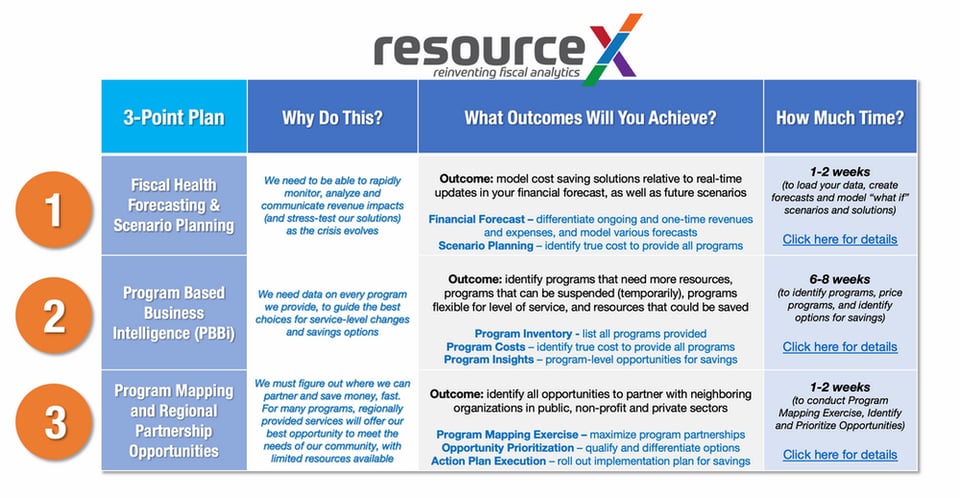The disruption brought on by the COVID crisis is beyond anything most of our organizations have experienced in our lifetimes, and the situation is still evolving.
The challenges facing city/county finances is simply too massive for a quick-fix solution. Nor will significant across-the-board cuts be of value (and/or likely tolerated) by citizens and the community.
Program Based Business Intelligence Webinar
Wednesday, April 29, 2020 at 11 am MT
Free registration. Register today!
Registration has expired. Please see webinar video recording below!
Local government needs data on every program they provide, to guide the best choices for service-level changes and savings options – and we need this data as soon as possible, to plan for decisions that we’ll have to make within the next 6-8 months.
We’re going to need to have programmatic data to base decisions on – knowledge of every program offered, the cost of providing the program, level of service, cost recovery, degree of mandate in providing the program, opportunity to partner, etc.
Service-level choices (what services will need more resources, what services will we continue to offer, what services will we cease altogether or provide at a lesser level of service, and what services may we partner regionally to provide more economically) are what will be required after all of our other quick-strike strategies are exhausted.
Short-term, one-time, bridge-the-gap solutions to “buy time” (like deferring capital projects, furloughs, pay-freezes, tapping reserves), while appropriate to survive and keep afloat in the near-term, are only sustainable in a rapid bounce-back scenario where the virus is contained permanently by summer, the economy reopens and returns to pre-crisis levels of productivity (not likely).
Most organizations will have already exhausted these immediate solutions to survive the first wave of economic set-backs from the first round of shelter-in-place policies deployed to “flatten the curve.”
For any scenario that emerges that is worse than the “best case” scenario of a vaccine by summer (including a “W” scenario including resurgence of the virus in the fall/winter requiring another round of shelter-in-place and business closure, and/or an “L” scenario which would entail a long-term recession / depression); local government managers will need strategies and solutions to optimize expenses within revenue constraints made substantially tighter and tighter – this will require fundamental choices as to:
what services will need more resources,
what services will we continue to offer,
what services will we cease altogether or provide at a lesser level of service, and
what services may we partner regionally to provide more economically
Local governments may have 6-8 months before economic impacts from a “W” or “L” scenario would hit and require programmatic choices. Therefore, there is a short-window of time (the next 3-6 months) to assemble programmatic data in order to be prepared with a plan of action as to service-level choices that would have to be made.
Solution: Program Based Business Intelligence (PBBi)
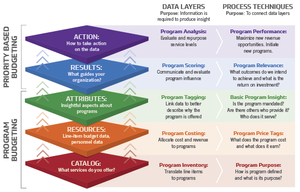
Program Based Business Intelligence (PBBi) is the foundational data set for data-driven decision-making. PBBi builds on and makes use of your line-item data to create more actionable insights at the program level.
PBBi is the foundational data set that unlocks insights pertaining to program efficiency, service levels, and cost recovery opportunities, and that’s why it’s a Best Practice. PBBi date brings you actionable business intelligence through:
Program Inventory – Translate line-items to programs and establish a master program inventory
Program Costing – Assign personnel and non-personnel costs (including FTE) to each program to establish fully-loaded cost of program delivery
Scoring/Evaluation – Assess and identify “impact on desired program outcomes”
Program Data & Insights – Establish Basic Program Attributes for each program including level of mandate, opportunity for partnership, demand for service, cost recovery, etc.
Blueprint for Action – Assess each program through the PBB Blueprint to determine future-focused direction for each program (reduce funding, decrease service levels, provide through a partnership, increase funding, etc.)
Applying Data – Take action and execute program recommendations; repurpose funding for programs that deliver proven results and maximum impact
In this webinar, you will learn why program level data (PBBi) is critical to the gravity of fiscal and programmatic decisions local leaders are facing. And how to get started in developing PBBi for your organization!
